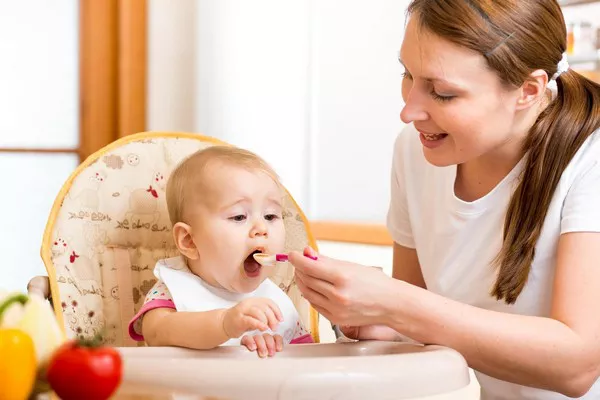Iron is an essential mineral that plays a crucial role in maintaining overall health and well-being. It is a key component of hemoglobin, the protein responsible for transporting oxygen throughout the body. Consuming foods rich in iron is important to prevent iron deficiency anemia and support optimal body functions. This article provides a comprehensive guide to three foods that are excellent sources of dietary iron, highlighting their benefits, recommended intake, and potential cooking methods to maximize iron absorption.
1. Spinach: A Nutrient-Dense Leafy Green
Spinach is a nutrient-dense leafy green vegetable that is not only rich in iron but also provides an array of other vitamins and minerals. Here are some key points about spinach as an iron-rich food:
Iron Content: Spinach is known for its iron content, with approximately 2.7 milligrams of iron per 100 grams. It contains non-heme iron, which is the form of iron found in plant-based foods.
Vitamin C Synergy: Consuming spinach with foods rich in vitamin C, such as citrus fruits or bell peppers, can enhance iron absorption. Vitamin C helps convert non-heme iron into a more readily absorbable form, improving iron utilization in the body.
Preparation Methods: Cooking spinach can help increase iron absorption. Lightly steaming or sautéing spinach can optimize iron bioavailability, while raw spinach may have higher levels of oxalates that can interfere with iron absorption.
2. Legumes: Plant-Based Protein Powerhouses
Legumes, including beans, lentils, and chickpeas, are versatile plant-based protein sources that are also excellent sources of iron. Here’s what you need to know about legumes as iron-rich foods:
Iron Content: Legumes are rich in iron, with different varieties offering varying amounts. For instance, cooked lentils contain about 3.3 milligrams of iron per 100 grams, while cooked kidney beans provide approximately 2.6 milligrams.
Fiber and Nutrient Profile: In addition to iron, legumes are high in fiber, protein, and various vitamins and minerals. They offer a well-rounded nutritional package and contribute to overall health and satiety.
Preparation Methods: Soaking legumes before cooking and using cooking methods such as boiling or pressure cooking can help enhance iron availability. Pairing legumes with vitamin C-rich foods further enhances iron absorption.
3. Red Meat: A Highly Bioavailable Source of Iron
Red meat, such as beef and lamb, is a highly bioavailable source of heme iron, which is more easily absorbed by the body compared to non-heme iron. Here’s what you should know about red meat as an iron-rich food:
Iron Content: Red meat is one of the richest sources of iron, containing approximately 2.6 milligrams of heme iron per 100 grams. The heme iron in red meat is more readily absorbed by the body compared to non-heme iron from plant-based sources.
Protein and Micronutrients: Red meat is also an excellent source of high-quality protein, vitamin B12, zinc, and other essential nutrients. It contributes to muscle development, supports immune function, and helps maintain healthy blood cells.
Cooking Methods and Portion Control: Opt for healthier cooking methods such as grilling, roasting, or broiling to minimize the intake of unhealthy fats. It’s important to consume red meat in moderation and balance it with other nutrient-dense foods in a well-rounded diet.
4. Incorporating Iron-Rich Foods into YourDaily Diet: Tips and Considerations
Here are some practical tips and considerations for incorporating iron-rich foods into your daily diet:
Diverse Food Choices: Aim for a diverse range of iron-rich foods to ensure a well-rounded nutrient intake. Include a mix of plant-based sources like spinach, legumes, and fortified grains, as well as animal-based sources like red meat or poultry (if preferred).
Meal Pairings: Combine iron-rich foods with sources of vitamin C to enhance iron absorption. For example, enjoy a spinach salad with citrus dressing or pair beans with bell peppers in a stir-fry. Including vitamin C-rich fruits or vegetables in meals and snacks can boost iron utilization.
Iron Supplements: In some cases, such as during pregnancy or for individuals with diagnosed iron deficiency anemia, iron supplements may be recommended. However, it’s important to consult with a healthcare professional before starting any supplementation regimen.
Cooking Techniques: Optimize iron absorption by using cooking techniques that enhance bioavailability. Steaming, sautéing, or lightly cooking vegetables and legumes can help make iron more accessible to the body.
Considerations for Vegetarian or Vegan Diets: Vegetarians and vegans can obtain sufficient iron from plant-based sources by consuming a well-planned diet that includes a variety of iron-rich foods. It may be helpful to consult a registered dietitian to ensure adequate iron intake and optimize absorption.
conclusion
incorporating iron-rich foods into your daily diet is important for maintaining optimal iron levels and preventing iron deficiency anemia. Spinach, legumes, and red meat are excellent sources of dietary iron, each with their unique benefits and considerations. Pairing these foods with vitamin C-rich options, using appropriate cooking techniques, and considering individual dietary preferences or restrictions can help maximize iron absorption. By prioritizing iron-rich foods and adopting a balanced approach to nutrition, you can support your overall health and well-being.


